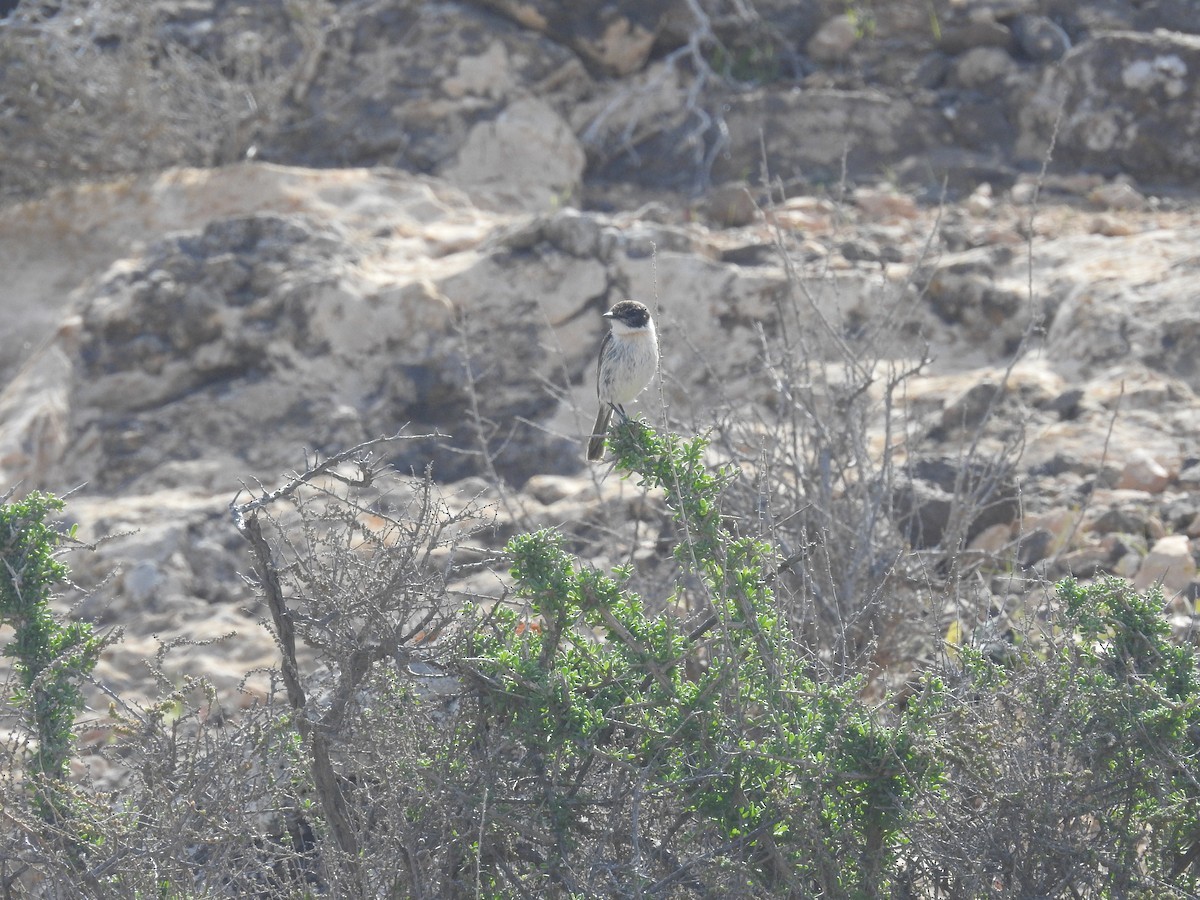Canary Islands Stonechat
A species of Stonechats and Bush Chats, Also known as Canary Island Stonechat, Fuerteventura Chat Scientific name : Saxicola dacotiae Genus : Stonechats and Bush Chats
Canary Islands Stonechat, A species of Stonechats and Bush Chats
Also known as:
Canary Island Stonechat, Fuerteventura Chat
Botanical name: Saxicola dacotiae
Genus: Stonechats and Bush Chats
Content
Description General Info
 Photo By Ashwin Viswanathan
Photo By Ashwin Viswanathan Description
The Canary Islands stonechat is intermediate in appearance between the European stonechat and the whinchat; its body size and shape reminiscent of a lithe European robin. Its upperparts are generally coloured as the whinchat, but more contrasting, dark brown with a blackish head and back streaks. It has a purer white supercilium reaching behind the eye and white neck sides, and a light orangey-chestnut breast becoming duller and paler on the underside towards the whitish belly. The rump and tail are dark, the latter with a white pattern visible in flight. There is also a white wing band. The female is similar to a washed-out version of the male, with a brown, black-streaked head and no white neck patches. The male has a ticking call like a pebble hitting another, and a high twittering song like a European stonechat. 
Size
13 cm
Nest Placement
Ground
Feeding Habits
Canary Islands Stonechat primarily feeds on invertebrates such as caterpillars, ants, and beetles, with a preference for small prey under 6mm. Nestlings are fed grasshoppers and adult lepidopterans. Canary Islands Stonechat also consumes berries, showing perch-and-pounce foraging behavior and aerial sallies for flying insects.
Habitat
The canary Islands Stonechat is primarily found on rocky hillsides with dense shrubbery like aulaga and saltwort. These birds prefer slopes with large boulders and lush vegetative cover, also inhabiting vegetated malpaís, barrancos fringed by tamarisk, and agricultural areas. They favor environments with substantial plant ground coverage, avoiding sandy, small-stoned, or lava-rich terrains.
Dite type
Insectivorous
General Info
Feeding Habits
Bird food type
Species Status
This Canary Islands stonechat is now considered Endangered, as construction, mainly tourism-related, encroaches upon the best habitat (Illera et al., 2006). The population is hard to estimate, but most probably between 1300 and 1700 mature birds (BirdLife International 2004), and recognisably in decline. In particular, heavy land clearance on the Jandía peninsula is isolating the local subpopulation and making it vulnerable to adverse effects of small population size. Desertification, exacerbated by grazing goats and locally sinking water tables, has also contributed to habitat loss. Feral cats and black rats prey on the eggs and young. A conservation action plan has existed for this species since 1999 (BirdLife International 2004). Due to its fairly high reproductive rate, if enough habitat is secured and predators are kept at bay, it should be able to hold its own. The Chinijo chat, subspecies murielae from the Chinijo Archipelago near Lanzarote, became extinct in the early 20th century. Usually claimed as mainly due to deteriorating habitat quality, the extinction may be more due to the effect of introduced predators. It was only reported to inhabit two offshore islands (Montaña Clara and Alegranza). 

 Photo By Ashwin Viswanathan
Photo By Ashwin Viswanathan Scientific Classification
Phylum
Chordates Class
Birds Order
Perching birds Family
Old world flycatchers Species
Canary Islands Stonechat